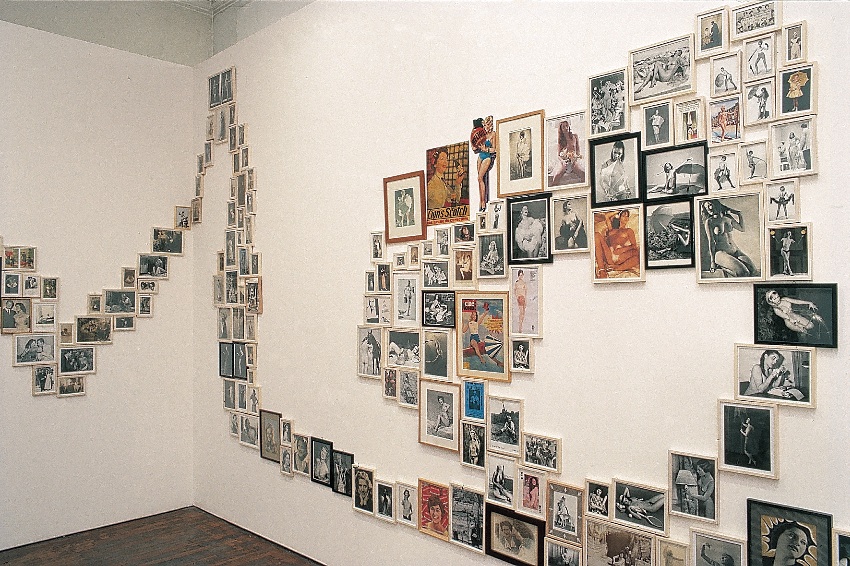
Jean-Jacques Lebel – Reliquaire pour un culte de Vénus
As an emblematic figure for a generation of artists who were part of the "cultural revolution" during the sixties, Jean-Jacques Lebel made a point of combining his artistic endeavours with his life philosophy. When he was cast out of the surrealist movement with Alain Jouffroy in 1960, all of his visual arts approach was founded on, and claimed the influence of André Breton, of the works of dadaists such as Max Ernst as well as Marcel Duchamp's thinking.To this environment we should also add the importance of a more purely philosophical group of thinkers, such as Gilles Deleuze and Félix Guattari. Jean-Jacques Lebel's path also crossed that of artworld personalities with multifaceted activities, but all of them inclined to put forward "poetic actions as activators of the contradictions of our industrial society". Encounters which thus combined poetry, painting, theatre, and political commitments with a series of happenings or performances, which Lebel was the first to organise in Europe, continuing and renewing the ideas put forth in New York by Allan Kaprow.
At that time, happenings were seen as the continuance of Action Painting, beyond the picture's flat surface, taking over various spaces and linked to Antonin Artaud's theories as regards the theatre. In that spirit, and in defiance of the prevailing political climate, Lebel co-organised with Alain Jouffroy, "L'Anti-Procès" in 1960, which included such differing artists as Brauner, Matta, Dufour, Rauschenberg, Tinguely, Michaux, Fontana, Erro, Fahltsröm and Lam, within a mix of total theatre, happenings, exhibitions, which enabled each of them to enjoy "absolute freedom to do what he wanted", and who simply had "to affirm with the others his opposition to the war in Algeria". In 1961, he took it upon himself to create the collective "Grand Tableau Antifasciste", hidden away in the Questura in Milan for 23 years. In the continuance of the "Anti-Procès" he set up the "Festival de la Libre Expression", in 1964, and from 1970 onwards, the "Festival International de Poèsie directe Polyphonix", combining visual arts, videos, music, performance, poetry.... (The 37th edition of Polyphonix took place at the Casino Luxembourg on 29th May, 2001.) We recall in 1965, the "Dechirex" happening by Lebel, during the second Festival de la Libre Expression which was based on the refusal of the motor car's supremacy within the social context: a 4CV Renault took part as a "character" in the event. At the end of the happening, the public attacked it virulently, leaving practically nothing behind. The next day, the artist Ben came into the crowd, blindfold and wielding a fireman's hatchet. On the subject of this violence, Jean-Jacques Lebel says: "the very relative violence of our evenings always contained irony, but it is true that some people's sense of humour might violate other people's sensitivity". Although Jean-Jacques Lebel's artistic practices were recognised as early as the sixties, until today in the field of performance, he is nevertheless a visual artist who emerged from "exile" into the art and exhibitions' world in 1988. He had retired twenty years earlier so as not to become a tamed artist. In Lebel's works, writing, collage, painting, sculpture, installations, direct action, were linked with sexuality, daily life, politics and philosophy, with, as a guideline, the "Dadaisation" of society (Portrait de Nietzsche, 1961; Portrait de Rauschenberg, 1961; Monument à Félix Guattari, 1995).In the Casino Luxembourg, he has chosen to exhibit an evolving installation, a Reliquaire pour un culte de Vénus, made up of more than a thousand images and objects having to do with Venus, picked up in the Sunday fleemarkets held around his studio, in the Eure, the Calvados, the Seine Maritime, as well as in farther off countries (Italy, Spain, China, Germany, United States, Quebec....) All these elements reflect the various kinds of cult devoted to Venus, from the "noblest" icons to the most "vulgar" type of kitsch."I mean Venus in the classical sense: the goddess of Love, of seductiveness, of womankind, in the realm of plasticity and of the sociology of signs. This great compilation of found objects, of discarded images, and paintings, collages, drawings, made by me, only appears chaotic: it has an intrinsic logic, a weave and even sometimes an endlessly shifting shape. Different forms of worship are combined together. It is a project or a Nietzschean dream: a contrasting painting of everything ever known about the goddess with a thousand faces and innumerable bodies. Hence the title Reliquaire pour un Culte de Venus.
Partners
In collaboration with Frac Basse-Normandie, Crédac, Villa Tamaris.